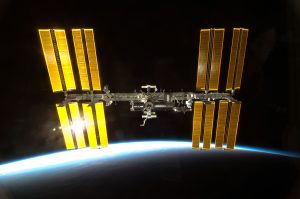This is so awesome. The Sloan Program in Microbiology of the Built Environment is offering a pair of postdoc fellowships to work on the microbiology of the International Space Station. Summary of the call is below, the compete information packet can be downloaded here. And if that’s not cool enough, the next blog post is …
Our latest Project MERCCURI paper came out last week and so I figured I’d do a quick post about it here since it’s a good fit for the microbiology of the built environment. In short, we collected a number of bacterial strains from built environments on earth and sent them to the space station to …
So our first attempt at entering the world of bacterial taxonomy and the description of a new species came out today with the thrilling title of “Porphyrobacter mercurialis sp. nov., isolated from a stadium seat and emended description of the genus Porphyrobacter“. The story leading to this paper took us into a lot of new …
NOTE (3-12-15): THESE RESULTS ARE INCORRECT. We have left them here for comparison. A blog post describing the problem is here and the correct information can be found here. We’ve finished analyzing all the data from the “Microbial Playoffs” part of Project MERCCURI (described here). Each microbe that was chosen to fly to the International …
I’m proud to announce that the sample collection for the building science component of Project MERCCURI is complete! In early May, Koichi Wakata from JAXA (Japan’s space exploration agency) collected swabs swabs of surfaces aboard the International Space Station. Back in June last year, Jenna, Wendy and I went to the Johnson Space Center in …
Just pointed to this story: Microbial stowaways to Mars identified : Nature News & Comment by Darlene Cavalier, our collaborator on the “Space Microbes” Project MERCCURI. The article reports on a presentation by Stephanie Smith at the ASM 2014 meeting going on in Boston. Smith presented results from characterizing (via culturing) the microbes present on various parts …
Quick post here (crossposted from my Tree of Life blog). Our Project MERCCURI got some press coverage relating to an event July 20th with the Arizona Cardinals: Gilbert, Tempe participate in national microbe-swabbing project – East Valley Tribune: Gilbert. From the article: “The event – held at the Arizona Cardinals’ training facility on July 20 – …
In my last two posts I described the process of developing the microbial growth experiment we will be running aboard the International Space Station. We’ve tackled growth assays on 96-well plates in zero gravity, at least in theory. How well will this actually work on aboard the space station? To find out, Jenna, Wendy and …
Microtiter plate readers are often used for measuring optical density in liquid media, and this is what we were planning to do. However, they are general purpose, programmable instruments, and there’s no rule that says you have to use them this way. It occurred to me that all of our problems stemmed from the difficulties …
Here is a conundrum: Suppose you want to measure growth rates of bacterial cultures in an aerobic environment, on LB, in 96-well plate format. So, you buy some plates from your favorite supplier, dispense some LB into the wells with a multichannel pipetter, inoculate from whatever your source is, and pop it into your plate …
